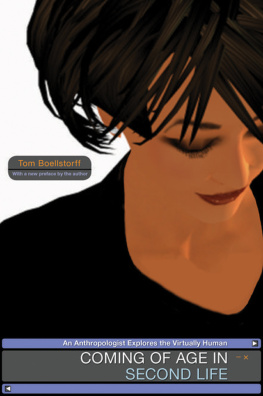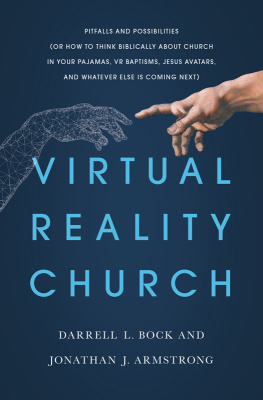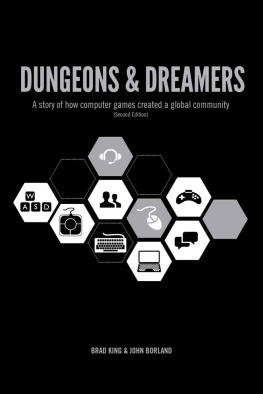
COMING OF AGE IN SECOND LIFE
COMING OF AGE IN SECOND LIFE
An Anthropologist Explores the Virtually Human
Tom Boellstorff
With a new preface by the author
PRINCETON UNIVERSITY PRESS
PRINCETON AND OXFORD
Copyright 2008 by Princeton University Press
Requests for permission to reproduce material from this work should be sent to Permissions, Princeton University Press
Published by Princeton University Press, 41 William Street,
Princeton, New Jersey 08540
In the United Kingdom: Princeton University Press, 6 Oxford Street, Woodstock, Oxfordshire OX20 1TW
All Rights Reserved
First new edition paperback printing, with a new preface by the author, 2015
Paperback ISBN: 978-0-691-16834-0
Library of Congress Control Number: 2015940356
British Library Cataloging-in-Publication Data is available
This book has been composed in Minion Pro and Arial display
Printed on acid-free paper.
press.princeton.edu
Printed in the United States of America
10 9 8 7 6 5 4 3 2 1
TO NEVA COZINE, MY MOTHER, FOR VIRTUALLY EVERYTHING
TO CARTER WALLAR ULASZEWSKI, MY GODSON, FOR BECOMING ACTUAL
Contents
Illustrations
Preface to the New Paperback Edition
A STORY OF THREE ISLANDS
Where do you start when you want to tell a story?
Answer: you just start. The rest will come along like a little lost sheep.
A NTHROPOLOGISTS LIKE TO tell stories that take you to unexpected places. But where do you start when you want to tell a story?
I should not overthink it. Like it says above, just start and the rest will come along like a little lost sheep. Those lines were written by Fran, someone I worked with in my research and (as often happens) a friend. You will learn more about her soon.
This is the preface to the 2015 edition of my book Coming of Age in Second Life, which was originally published in 2008. A preface like this is an odd kind of thing, because on purpose it is written many years after the main text it introduces. I find it a bit like commenting on a book written by an earlier self. It is still me, but I have changed, grown, moved on to other things, and the world has changed too.
As is often the case for new editions like this, the main text of Coming of Age in Second Life is unchanged save for correcting a few typographical errors. This is an ethnography, a study of a culture in a particular place and time. There would be no way to update the text without it becoming a whole new book. But there are things an author can address in a preface like this one, including developments since the books original publication, ways the book has been discussed, and themes of lasting value. I did not meet Fran until after this book was first published, and so it is fitting that with these things in mind, Fran and I are going to tell a story together. It is a story of three islands, and we will go backwards in time, just like you will go backwards in time from this preface to the rest of Coming of Age in Second Life.
A N ISLAND DANCE
I first met Fran on Namaste Island, next to her daughter Barbie and some other friends in a cabin with wooden walls. It was a support group for people with Parkinsons Disease; I do not have Parkinsons myself, but was conducting research about illness and disability. That is why I found myself sitting in this circle with Fran as our leader, sharing troubles, joys, challenges. I will never forget when Fran said I was diagnosed with Parkinsons Disease about six years ago. And when I got my diagnosis, it was like a punch in the gut. Yet Fran not only supported others, but kept active on Namaste Island: Ill just walk around, go to the beach, even go horseback riding.
My first dance with Fran was on this island too. It was at the Phantom of the Opera Masquerade Ball, a benefit for Parkinsons Disease charities held in a high-ceilinged ballroom that was all chandeliers and marble, with a tiled fountain in the center. I bought a new tuxedo for the event and my shopping excursion meant I arrived a little late. Right away I saw Fran in her luxurious red ball gown, complete with long red gloves, a necklace glittering with red and white stones, hair done up in blond curls, and an elegant white-feathered mask. Next to her was Barbie, whose gown shimmered blue and violet, every bit as breathtaking. Fran and I spun around the ballroom, song after song. At one point she looked at me and said It thrills me to see me dancing. This is who I am.
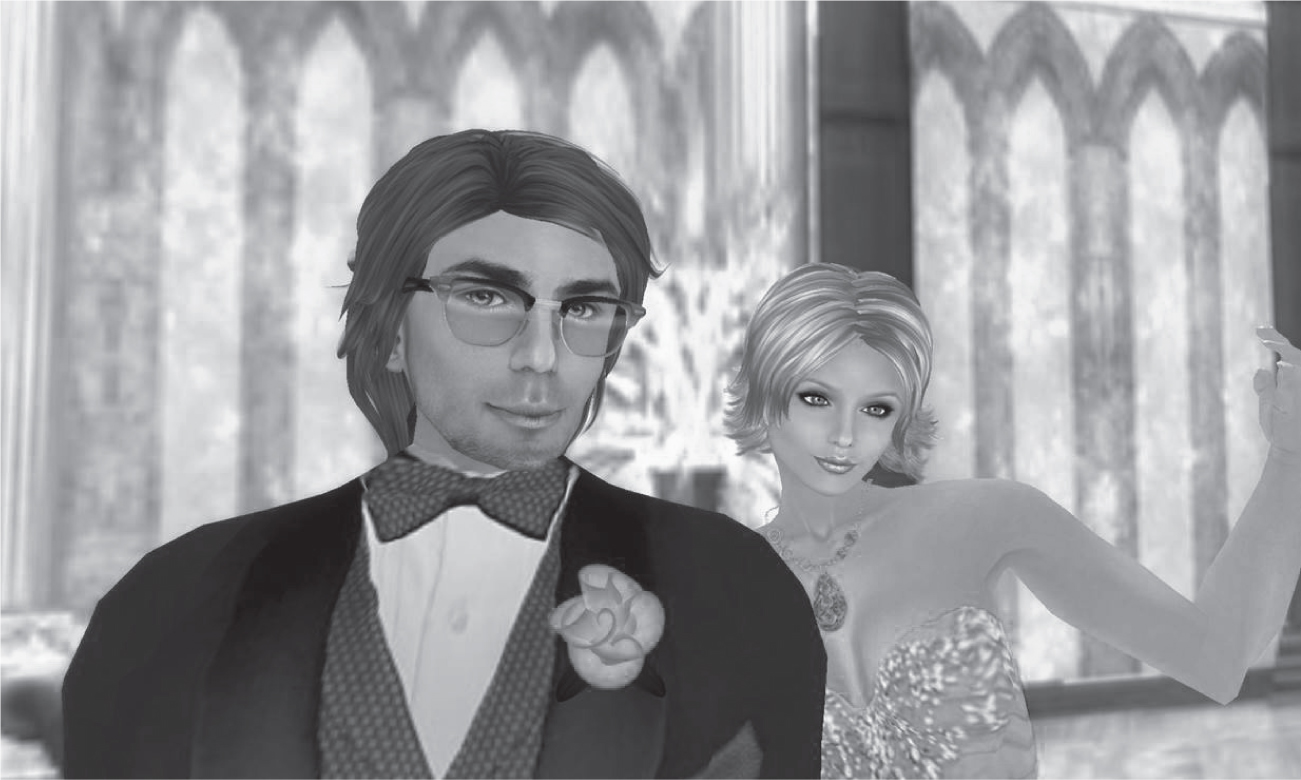
F IGURE P.1. Fran and Tom in real life.
Did you already guess that Fran and I were dancing not in the physical world, but in Second Life, a virtual world (). That is not the typical image of someone in a virtual world, and Fran was not the average Second Life resident, but anthropologists know that outliers can teach us a lot about the norm. Think with me like an anthropologist for a moment. When Fran said this is who I am while describing her avatar, she was not in denial about her physical body. She was saying that her virtual and physical bodies were both real, each in their own way. In this regard Fran was not an outlier at all. Her views beautifully captured a set of beliefs and experiences I commonly encountered in Second Life and other virtual worlds, and that other scholars have described as well. We should thus listen carefully when Fran said that being in Second Life was:
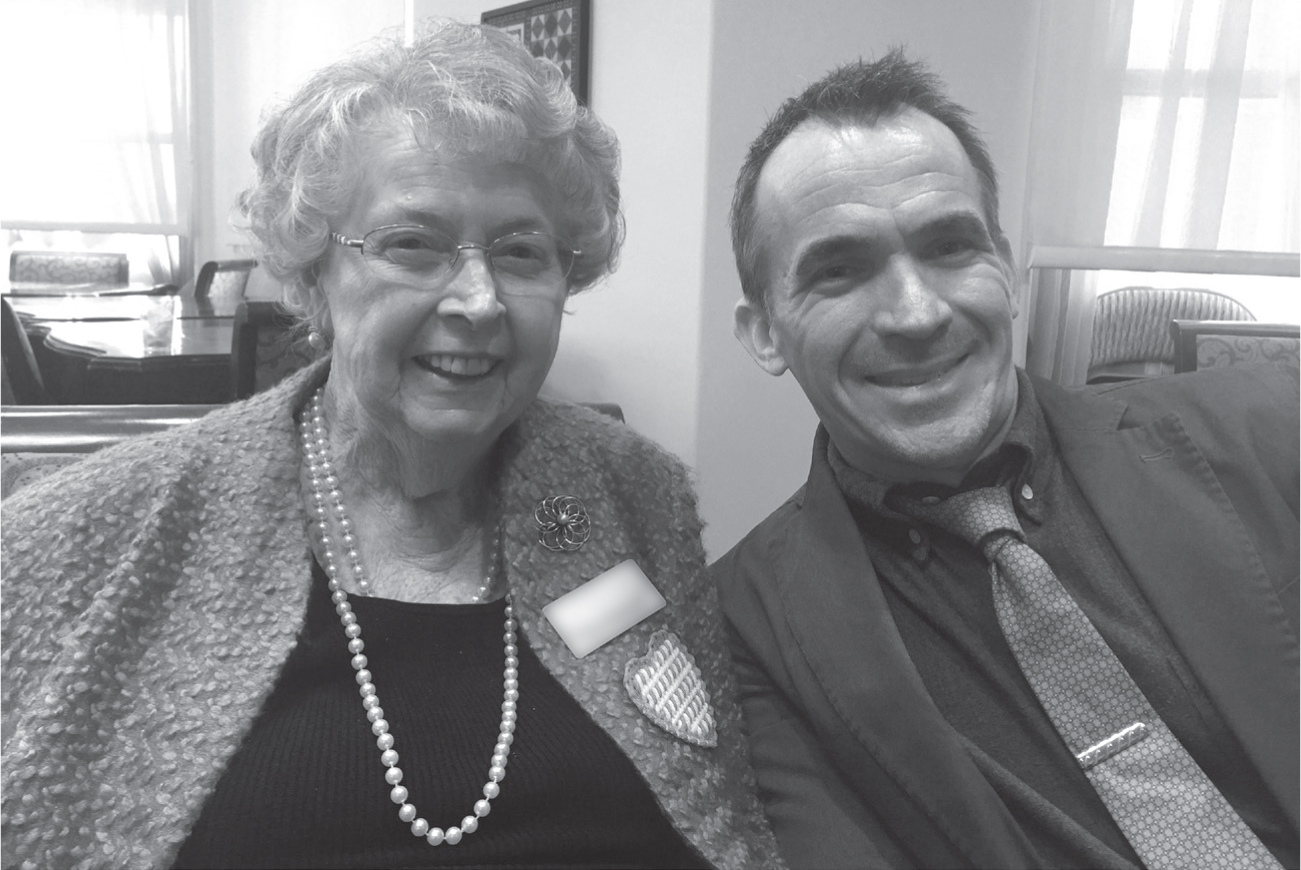
F IGURE P.2. Fran and Tom in real life.
Greater than great, okay?When Im doing things like, I will dance and Ill watch my legs, and while Im sitting here [in the physical world], my legs will be doing what Im doing there that I cannot do here. I would fall on my face if I were to do something like that. I watch myself and I get thrilled that I am dancing! You see, I dont think of me sitting in this chair: me is the person on the computer.
Her understanding of both virtual and physical bodies as real goes back to the first time she created her avatar with Barbie:
I said to Barbie make me blonde and I am grey, and make me young and Im old, and so I do not look like my avatar at all. But if I look at her, I see Fran. I guess thats who I am if I take a zipper and pull her out of me, thats who I am.
The difference between Frans physical body and avatar body was not about hiding anything, and she often talked about her fabulous life in the physical world. She was not denying her physical body and was certainly aware of her Parkinsons Disease every day. Instead, Fran was taking advantage of a virtual world to make a reality in which her physical body was not her only embodiment. Over and over, Fran insisted that Second Life was as real as the real world. As she once put it, Actually I feel like this is more real-world to me than my real world. Her experience of having an avatar body was real, the places in Second Life where she spent time were real, and her relationships and activities in Second Life were real. All these aspects of virtual world social interaction were distinct from the physical world, but there could be influence between them. Barbie, Frans daughter offline, could be Frans friend online and their shared experiences were real. In the other direction, people Fran met online could become real friends, whether they socialized only online (because the person might be thousands of miles from Frans home) or met in the physical world (as happened, for instance, with me).
Next page
